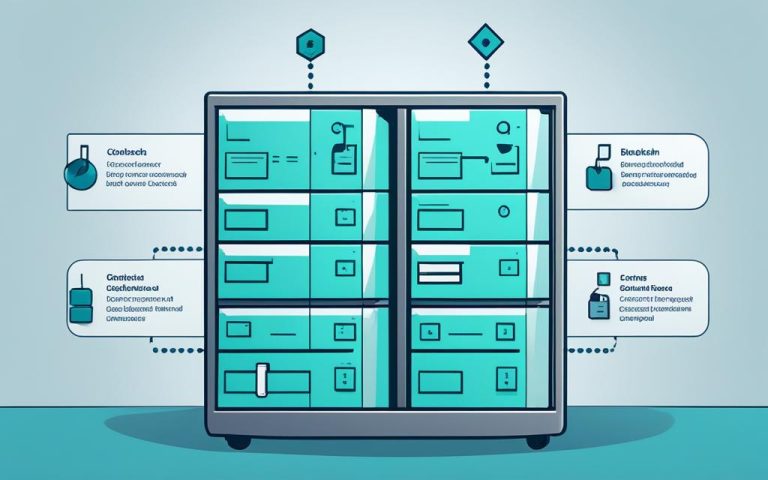A crypto bank lets people send and receive digital money. It joins traditional and modern financial worlds. This includes services in both crypto and standard currency.
These banks offer various services. These include dealing with money, loans, pulling out cash, and investing. They also offer blockchain transactions and crypto wallets.
They aim to build trust in digital currencies and their uses. Some are regular banks that now handle crypto. Others started as digital or crypto banks.
They offer a safe place for dealing with digital money. Alongside, they provide regular banking services too.
How Does Crypto Banking Work?
Crypto banking provides financial services for cryptocurrencies. It offers flexible and easy options for handling digital assets. Let’s dive into some important features of crypto banking:
Crypto Loans
Crypto loans let users borrow money using their cryptocurrencies as collateral. No need for traditional credit checks here, since digital assets back the transactions. This offers an alternative for those outside the regular banking system or who dislike long application processes.
Interest-Bearing Accounts
Users can put cash or cryptocurrencies into interest-bearing accounts and earn monthly interest. These accounts help users grow their wealth as their digital assets appreciate. Crypto banks often give interest rates from 7% to 10%, much better than regular savings accounts.
Crypto Debit Card
Crypto debit cards let users pay with cryptocurrencies like they would with a traditional debit card. This makes spending digital assets easy at many places, online and in person. It makes digital currencies more practical for daily use.
Crypto Interest Accounts
Crypto interest accounts work much like traditional savings accounts. By lending their digital currencies, users can earn interest. This is a way to make passive income and potentially get higher returns from the crypto market.
Crypto banks help users explore decentralization and Web 3.0 with structured banking services. They provide financial services that combine traditional banking with the decentralized crypto space.
Financial giants like Goldman Sachs and Citigroup are investing in crypto. More governments are getting involved too, making crypto banking popular for those looking for different financial options. These services offer high interest rates and fast international transactions. But, remember that crypto banking has risks due to cryptocurrency volatility. Always consider your risk tolerance and do your research before starting.
“Crypto banking provides users with financial services that bridge traditional banking systems with the decentralized and fast-paced world of cryptocurrencies.”
To learn more about crypto banking, check these resources:
- B2BinPay: What Is a Crypto Bank and How Does It Work
- AlphaPoint: Banks and Cryptocurrency
- NerdWallet: What Is Crypto Banking?
Conclusion
Crypto banking is an easy and safe way to work with cryptocurrencies. With over 19,000 kinds out there, it’s big – worth $3 trillion. This gives many chances for people and companies to grow.
But, handling crypto money can be risky. The prices jump around a lot, and it’s complex. So, it’s important to think well about where to invest. Always pick platforms that are known for being safe.
Using open banking with crypto can make things safer and smoother. It connects your crypto wallets to your bank accounts. This brings better security and eases transferring money. Plus, it helps create new kinds of financial products.
As more people use cryptocurrencies, and regular banks start to welcome them, countries are trying to figure out the rules. They’re working to make things clear and safe, and stop bad uses.
Checking out the impact of cryptocurrencies shows why banks and crypto needs to work together. And merging them into everyday banking could help more people get on board. The goal is to mix new ideas, safety, and making sure everyone has a fair shot.
FAQ
What is a crypto bank?
A crypto bank handles transactions and exchanges of digital money. It links traditional and digital economies by offering both standard and crypto services. Customers can make transactions, get loans, and invest their money.
Crypto banks can be regular banks with added crypto services or entirely digital. They ensure a safe place for both storing and trading cryptocurrencies alongside traditional services.
How does crypto banking work?
In crypto banking, you can get loans by using your digital currencies as security. There’s no need for credit checks because the loans are secured by digital assets. Users can also put money in accounts that earn interest, much like in regular banks.
Some banks give out crypto debit cards, making it easy to spend digital money. There are also special savings accounts. Here, you can lend your digital money to others and earn interest. This way, users can gain more from their investments than with traditional banks.
What are the risks involved in managing cryptocurrencies?
Cryptocurrencies are volatile and complex, which makes them risky. It’s important to use trusted crypto banks that focus on keeping your money safe. The world of crypto banking is growing, giving users a mix of traditional and innovative financial services.



















